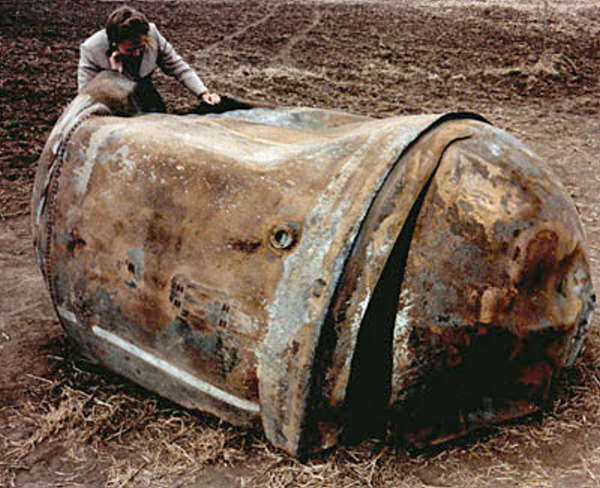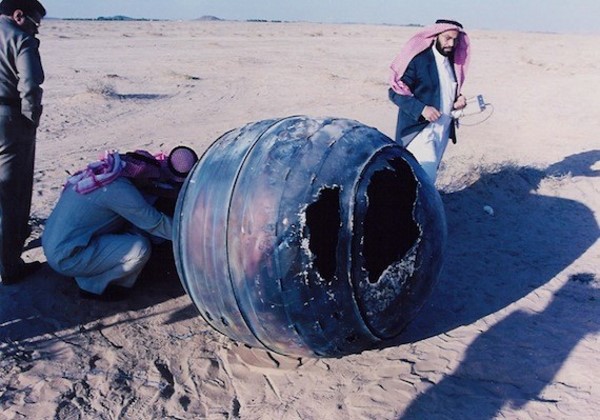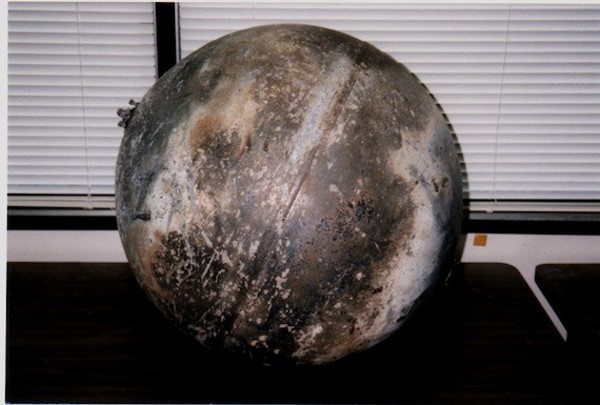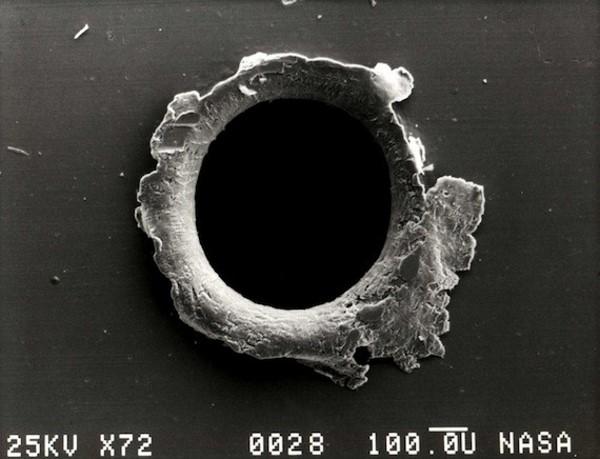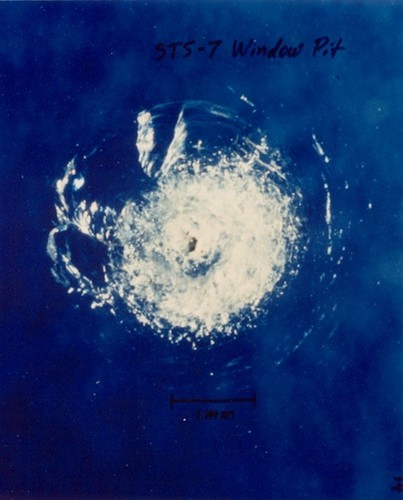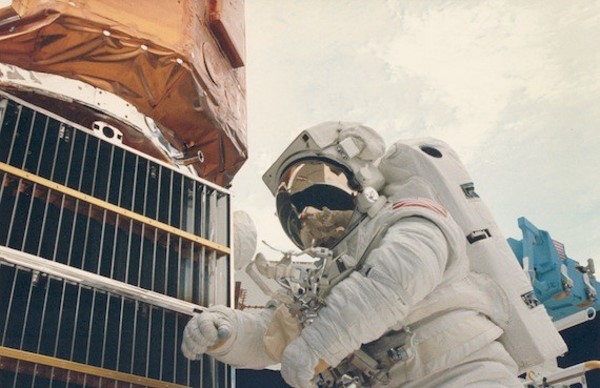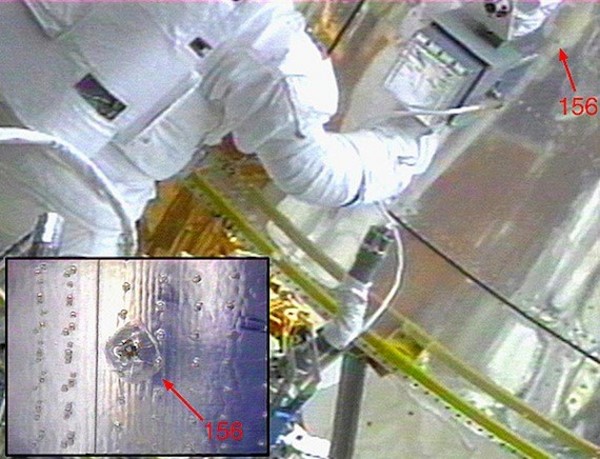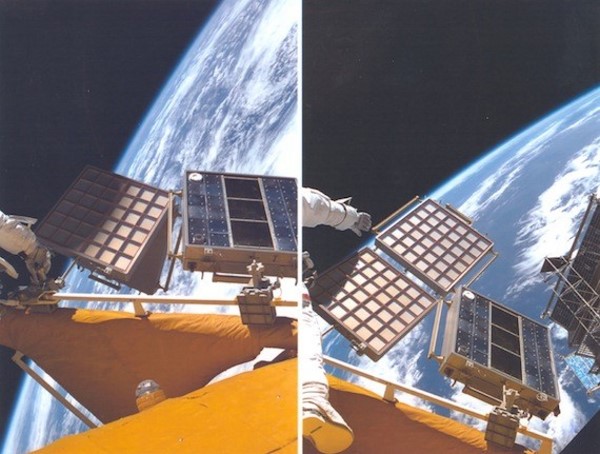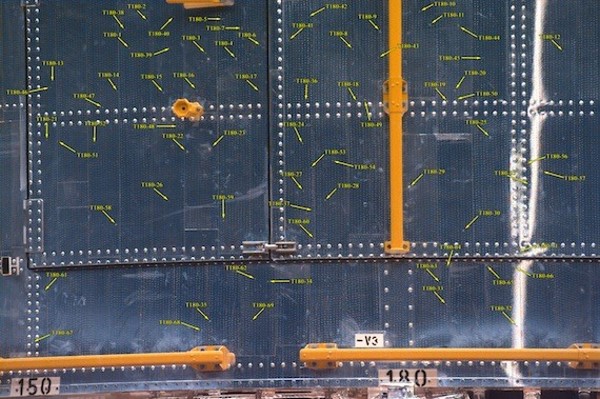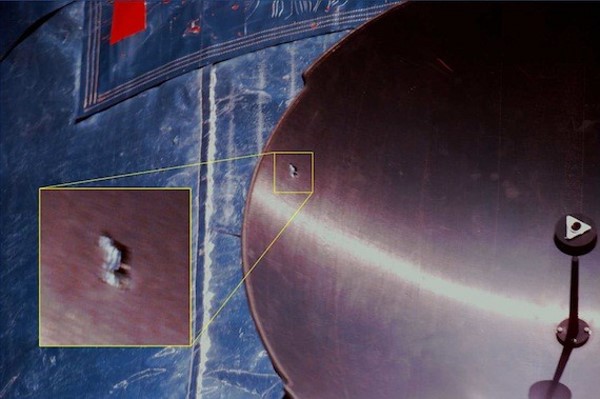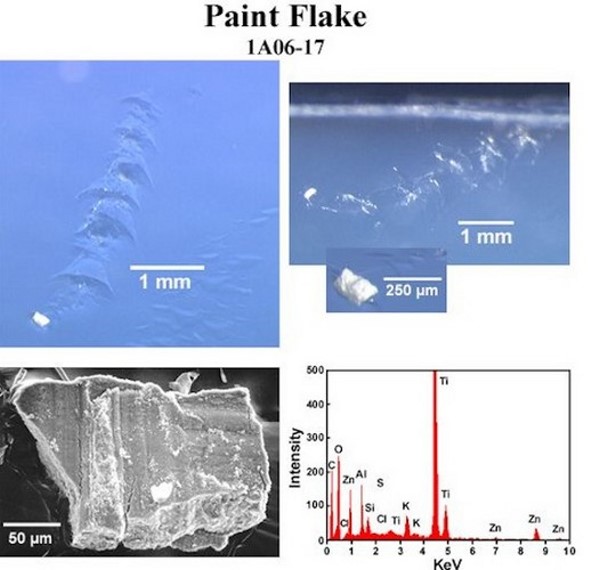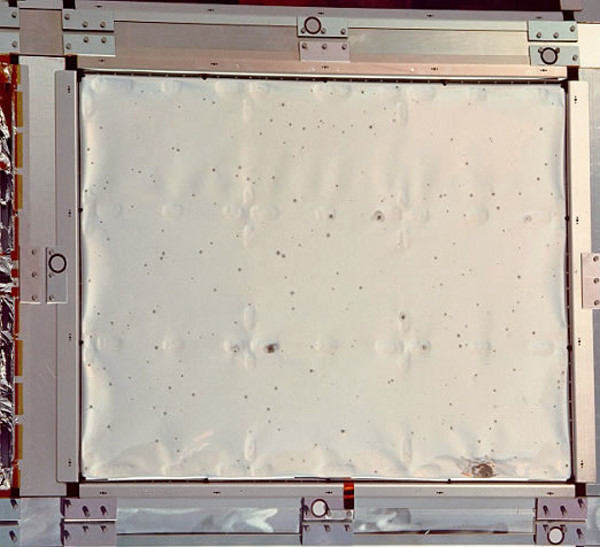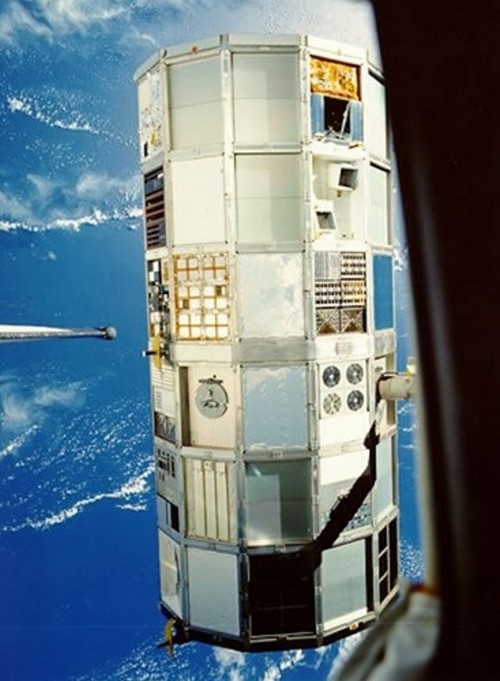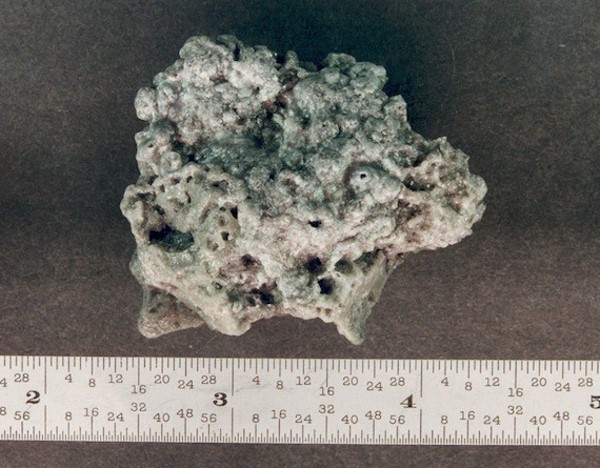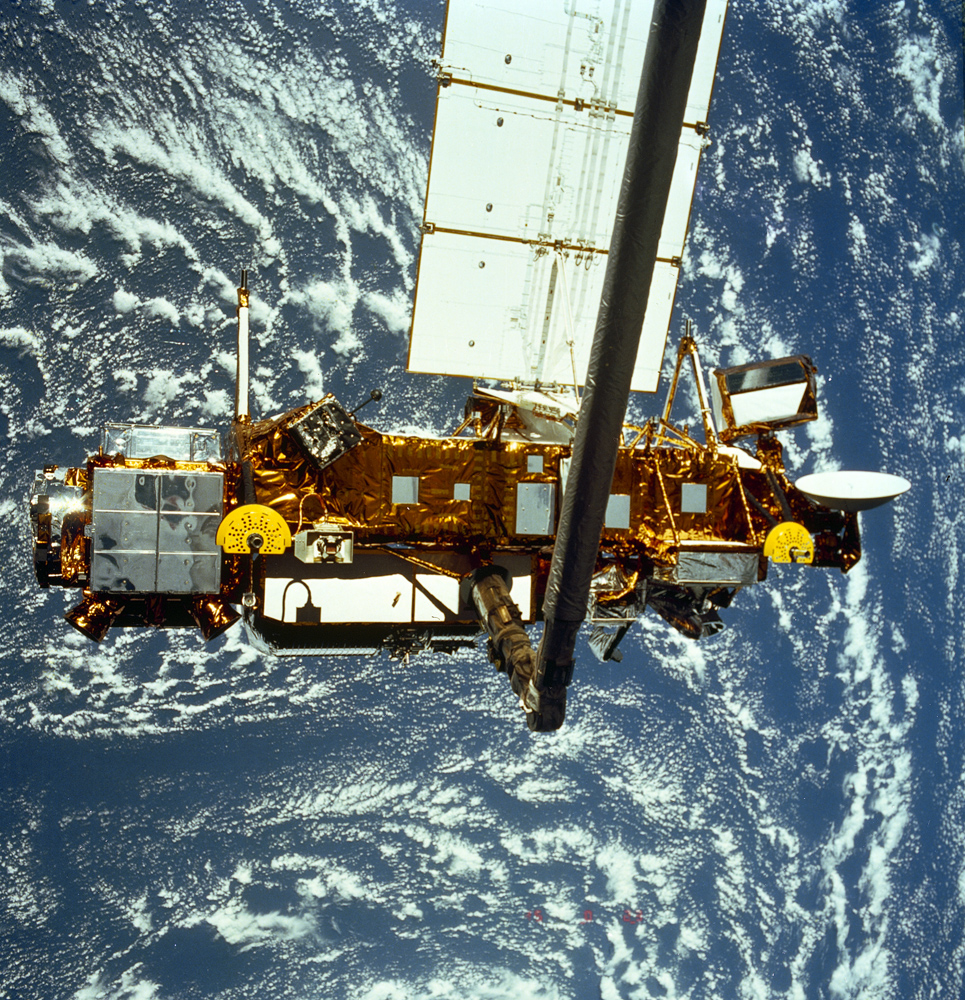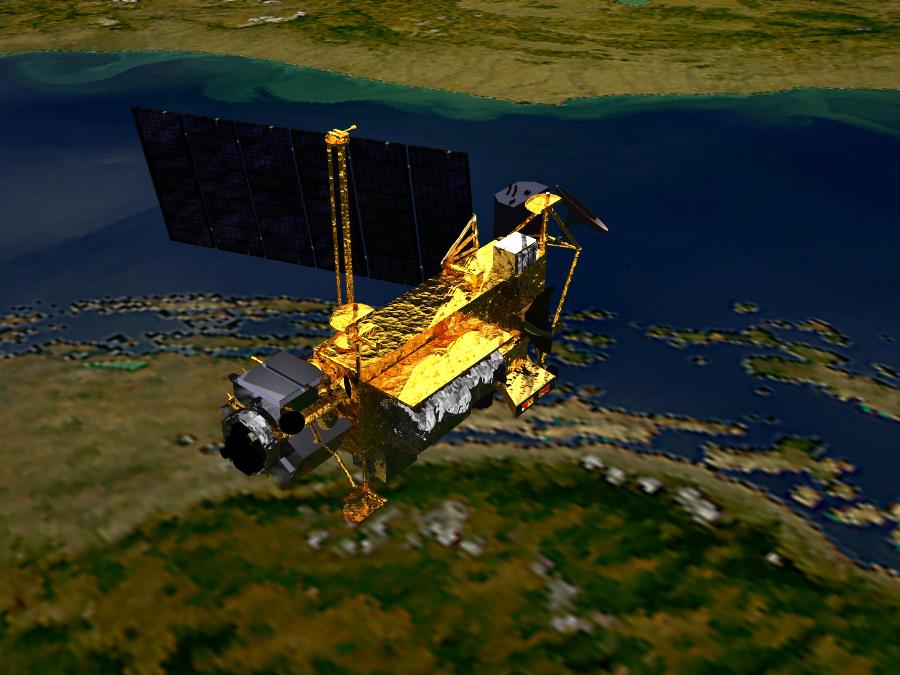|
Space Debris |
||||||||||||||
|
..
This 30 kg titanium pressurant tank also survived the reentry of the Delta 2 second stage on 22 January 1997 but was found farther downrange near Seguin, TX ..
Credit: NASA, Orbital Debris Program Office ..
Credit: NASA, Orbital Debris Program Office ..
Credit: NASA, Orbital Debris Program Office ..
Credit: NASA, Orbital Debris Program Office ..
Credit: NASA, Orbital Debris Program Office Mir Environmental Effects Payload (MEEP) Orbital Debris Collector (ODC) was exposed to the space environment for 18 months. The ODC utilized an aerogel capture medium. Aerogel is a very low density material that can slow small particles down from orbital velocities and capture them without destroying them.
Credit: NASA, Orbital Debris Program Office - Full size image here ..
Credit: NASA, Orbital Debris Program Office ..
Credit: NASA, Orbital Debris Program Office ..
Credit: NASA, Orbital Debris Program Office ..
for 5.7 years before being retrieved by space shuttle Columbia in January 1990. Credit: NASA, Orbital Debris Program Office ..
Credit: NASA, Orbital Debris Program Office Solid rocket motor (SRM) slag. Aluminum oxide slag is a byproduct of SRMs. Orbital SRMs used to boost satellites into higher orbits are potentially a significant source of centimeter sized orbital debris. This piece was recovered from a test firing of a Shuttle solid rocket booster. Full Size image NASA SOURCE: The
Examiner
|
||||||||||||||
|
..
during deployment from Space Shuttle Discovery, September 1991. CREDIT: NASA Marshall Space Flight Center By leonard David Heads up! That's the word from NASA today (Sept. 7) given the impending re-entry of a 6.5-ton satellite through Earth's atmosphere. The huge Upper Atmosphere Research Satellite (UARS) is expected to re-enter Earth's atmosphere in an uncontrolled fall in late September or early October. Much of the spacecraft is expected to burn up during re-entry, but some pieces are expected to make it intact to the ground, NASA officials said. The U.S. space agency will be taking measures to inform the public about the pieces of the spacecraft that are expected to survive re-entry. SOURCE: Space.com |
||||||||||||||
|
..
By SPACE.com Staff A dead NASA satellite, called the Upper Atmosphere Research Satellite (UARS), is falling uncontrolled toward Earth and crash in the Pacific Ocean on Saturday, Sept. 24. Agency officials are unable to pinpoint the exact time and location of the fall, but have said there is little risk of debris landing in populated areas. SPACE.com is providing full coverage of the UARS re-entry, including a look at the issues surrounding orbital debris and space situational awareness. FINAL NASA Update (Sept. 27 PM): "NASA's decommissioned Upper Atmosphere Research Satellite fell back to Earth at 12:01 a.m. EDT (0401 GMT) on Saturday, Sept. 24. The Joint Space Operations Center at Vandenberg Air Force Base in California has determined the satellite entered the atmosphere over the Pacific Ocean at 14.1 degrees south latitude and 189.8 degrees east longitude (170.2 west longitude). This location is over a broad, remote ocean area in the Southern Hemisphere, far from any major land mass. The debris field is located between 300 miles and 800 miles downrange, or generally northeast of the re-entry point. NASA is not aware of any possible debris sightings from this geographic area. This is your source for official information on the re-entry of UARS. All information posted here has been verified with a government or law enforcement agency. This is NASA's final status report on the re-entry of UARS." SOURCE: Space.com |
||||||||||||||
|
NASA’s decommissioned Upper Atmosphere Research Satellite fell back to Earth at 12 a.m. EDT (0400 GMT), as Friday, Sept. 23, turned to Saturday, Sept. 24 on the United States east coast. The Joint Space Operations Center at Vandenberg Air Force Base in California has determined the satellite entered the atmosphere over the Pacific Ocean at 14.1 degrees south latitude and 189.8 degrees east longitude (170.2 west longitude). This location is over a broad, remote ocean area in the Southern Hemisphere, far from any major land mass. The debris field is located between 300 miles and 800 miles downrange, or generally northeast of the re-entry point. NASA is not aware of any possible debris sightings from this geographic area. Related Links: Papers: |
||||||||||||||
| FAIR USE NOTICE: This page contains copyrighted material the use of which has not been specifically authorized by the copyright owner. Pegasus Research Consortium distributes this material without profit to those who have expressed a prior interest in receiving the included information for research and educational purposes. We believe this constitutes a fair use of any such copyrighted material as provided for in 17 U.S.C § 107. If you wish to use copyrighted material from this site for purposes of your own that go beyond fair use, you must obtain permission from the copyright owner. | ||||||||||||||
|
|
